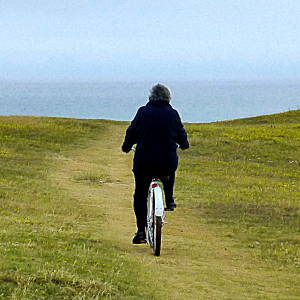The History Post #4
Another plaque on the History Post in Cocking, West Sussex. Getting to the point where I'll have to take a step ladder to show you any more, this is about as high as I can reach. It commemorates the ploughing of the South Downs from 1940 onwards.
The South Downs are full of ancient ways and historical remains, and have played an important part in the lives of the local population since ancient times. From around 1000AD up to WW2, farmers practised a traditional 'sheep and corn' system, where sheep - mainly the Southdown breed - would be confined to one field to fertilise it before being let out on the Downs to feed and roam on the chalkland grass.
During WW2 food shortages were immediately a concern as more and more lines of import were restricted, and in 1940 the government encouraged ploughing up of grassland for arable farming, continuing in the difficult years after the war. 8,000 acres of former chalk grassland were ploughed. Not only the landscape changed, but so too did the ecology with great loss of wildlife habitat. Before the war, grassland covered some 40-50% of the Downs, but only 3-4% survived. In later years, there was also pressure on the grassland because of the need for more housing.
Some schemes were tried to bring back grassland, including the Environmental Stewardship scheme to help farmers pay for conservation work on their land for the benefit of different habitats and species of wildlife. Eventually the South Downs National Park was formed in 2011, to protect and restore the Downs.
Other History Posts
#3 Here
#2 Here
#1 Here
- 0
- 0
- Panasonic DMC-TZ19
- 1/100
- f/3.3
- 4mm
- 100

Comments
Sign in or get an account to comment.


